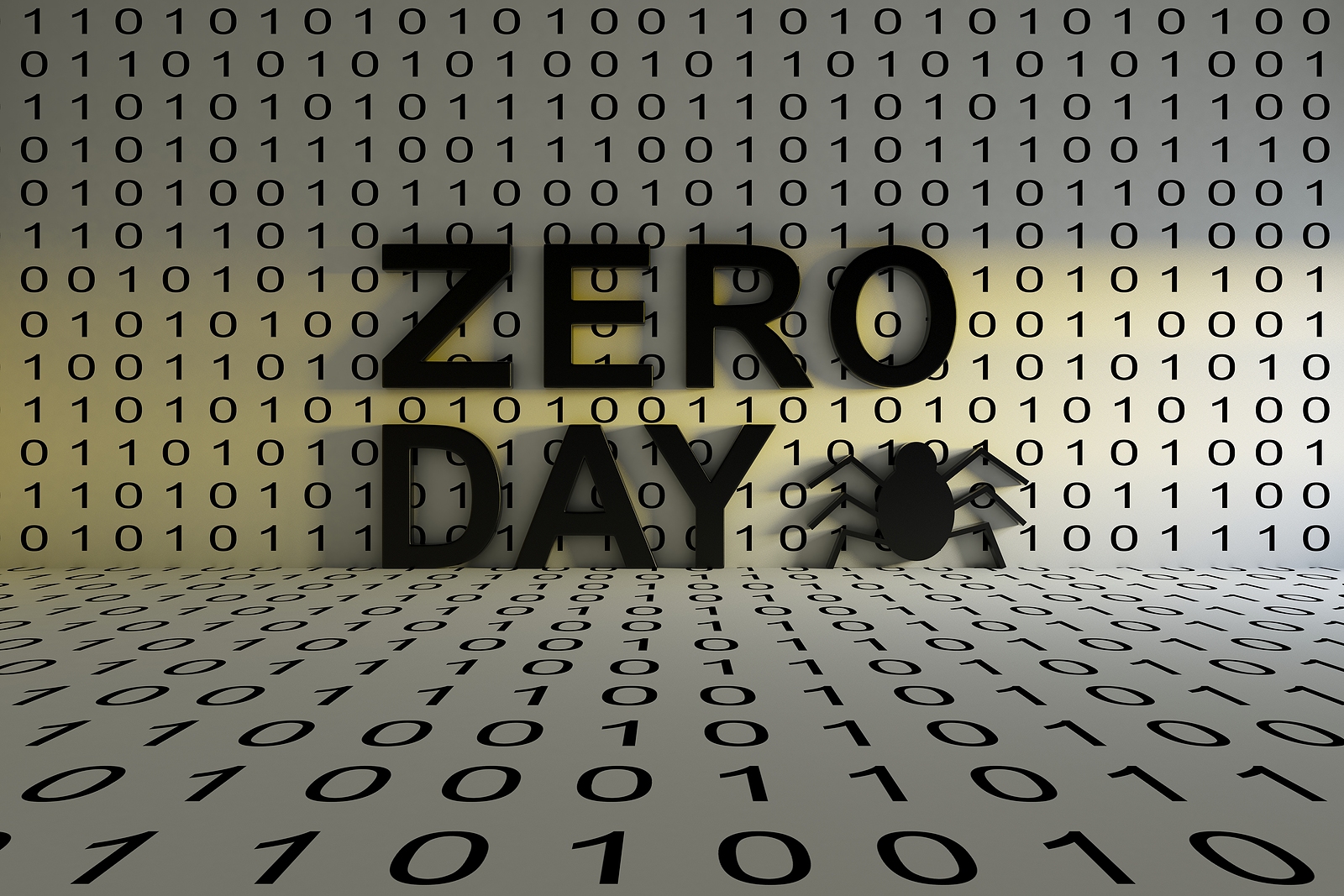A zero-day exploit represents one of the most dangerous threats in cybersecurity today, targeting software vulnerabilities that remain completely unknown to developers and security teams. These sophisticated attacks leverage security flaws that have zero days of protection, meaning no patches or fixes exist when hackers strike. The term “zero-day” originally emerged from the software piracy world, referring to newly released programs obtained before their official public launch. Today, this terminology has evolved to describe the critical window between vulnerability discovery by malicious actors and the development of protective measures by software vendors.
Zero-day exploits pose unprecedented risks because they operate in complete stealth, bypassing traditional security measures that rely on known threat signatures. Unlike conventional cyberattacks that target well-documented vulnerabilities, zero-day exploits catch organizations completely off guard, often remaining undetected for months while attackers establish persistent access to critical systems. The sophisticated nature of these attacks has made them valuable commodities in cybercriminal markets, with exploit codes selling for thousands of dollars on dark web platforms.
The impact extends far beyond individual systems, affecting entire industries and national infrastructure. From the infamous Stuxnet worm that targeted Iran’s nuclear facilities to recent attacks on major corporations, zero-day exploits have demonstrated their potential for causing widespread disruption. Understanding these threats becomes crucial as organizations worldwide face an increasingly hostile digital environment where traditional security approaches prove insufficient against unknown vulnerabilities.
Understanding Zero-Day Vulnerabilities

Zero-day vulnerabilities represent fundamental flaws in software code that create security gaps completely unknown to developers, vendors, and security professionals. These vulnerabilities exist in virtually all software and hardware systems, as achieving perfect code without any bugs remains practically impossible despite rigorous development processes. The critical distinction lies in their undisclosed nature – while many software vulnerabilities eventually become known and patched, zero-day vulnerabilities remain hidden until discovered by either security researchers or malicious actors.
Software Development Reality
Modern software development involves millions of lines of code, creating countless opportunities for security flaws to emerge. Developers strive to create secure applications, but the complexity of contemporary software systems makes it nearly impossible to identify every potential vulnerability before release. These hidden flaws can exist in any software component, from operating systems and web browsers to specialized enterprise applications.
Discovery Timeline
The timeline between vulnerability introduction and discovery varies dramatically, sometimes spanning months or even years. During this extended period, systems remain completely exposed to potential exploitation, creating significant security risks for organizations worldwide. The discovery process typically follows a pattern where malicious actors identify and exploit vulnerabilities before legitimate security researchers or software vendors become aware of their existence.
The Zero-Day Exploit Process
Zero-day exploits follow a sophisticated attack methodology that maximizes their effectiveness while minimizing detection risks. The process begins when attackers discover previously unknown vulnerabilities through various means, including reverse engineering, fuzzing techniques, or insider knowledge. Once identified, skilled hackers develop exploit code specifically designed to leverage these vulnerabilities for unauthorized system access.
Attack Vector Development
Successful zero-day exploits require careful planning and technical expertise to create reliable attack vectors. Attackers must understand the target system’s architecture, identify the most effective exploitation methods, and develop code that consistently achieves their objectives. This process often involves extensive testing in controlled environments to ensure the exploit works across different system configurations and software versions.
Delivery Mechanisms
Zero-day exploits typically reach their targets through carefully crafted social engineering campaigns. Attackers often use seemingly legitimate emails containing malicious attachments or links to compromised websites. These delivery methods exploit human psychology rather than technical vulnerabilities, increasing the likelihood of successful system compromise. Once users interact with these malicious elements, the exploit code executes automatically, establishing unauthorized access to the target system.
Notable Zero-Day Attack Examples

Historical zero-day attacks demonstrate the devastating potential of these sophisticated threats across various industries and sectors. These real-world examples illustrate how attackers leverage unknown vulnerabilities to achieve their objectives, ranging from espionage and sabotage to financial gain and data theft.
Stuxnet: Industrial Sabotage
The Stuxnet worm represents perhaps the most famous zero-day attack in cybersecurity history. Discovered in 2010, this sophisticated malware targeted Iran’s nuclear enrichment facilities by exploiting four separate zero-day vulnerabilities in Microsoft Windows systems. The attack successfully compromised programmable logic controllers, causing physical damage to centrifuges and demonstrating how cyber weapons can create real-world destruction.
Recent Corporate Attacks
The 2021 Kaseya VSA attack showcased how zero-day exploits can create cascading effects across multiple organizations. Attackers exploited a vulnerability in Kaseya’s endpoint management software, subsequently infecting over 1,000 companies worldwide with ransomware. This attack highlighted the particular danger of targeting managed service providers, as successful exploitation can impact numerous downstream clients simultaneously.
Browser and Operating System Vulnerabilities
Major technology companies regularly face zero-day threats targeting their widely used products. Google Chrome experienced multiple zero-day vulnerabilities in 2021, requiring emergency patches to protect users. Similarly, Apple’s iOS platform, despite its reputation for security, fell victim to zero-day attacks that allowed remote iPhone compromise without user interaction.
Organizational Impact and Consequences
Zero-day attacks create multifaceted challenges for organizations, extending far beyond immediate technical concerns. The unknown nature of these threats means traditional security measures often prove inadequate, leaving organizations vulnerable to extended periods of unauthorized access and data compromise.
Financial and Operational Disruption
Organizations face significant financial losses from zero-day attacks through direct theft, operational disruption, and recovery costs. The extended detection windows associated with these attacks often result in prolonged system compromise, allowing attackers to establish persistent access and extract valuable data over time. Recovery efforts frequently require extensive system rebuilding, forensic analysis, and security infrastructure upgrades.
Reputation and Trust Erosion
Successful zero-day attacks can severely damage organization’s reputation and customer trust. When sensitive customer data becomes compromised through unknown vulnerabilities, organizations face long-term consequences that extend well beyond immediate financial losses. Rebuilding customer confidence often requires years of demonstrated security improvements and transparent communication about protective measures.
Prevention and Mitigation Strategies

Defending against zero-day exploits requires comprehensive security strategies that go beyond traditional signature-based detection methods. Organizations must implement layered security approaches that can identify and respond to unknown threats through behavioral analysis and proactive monitoring.
Advanced Threat Detection
Modern security solutions employ machine learning and behavioral analysis to identify suspicious activities that may indicate zero-day exploitation. These systems monitor network traffic patterns, system behavior, and user activities to detect anomalies that traditional antivirus software might miss. Intrusion detection systems, intrusion prevention systems, and security information and event management platforms work together to provide comprehensive threat visibility.
Proactive Security Measures
Regular security audits, penetration testing, and vulnerability assessments help organizations identify potential weaknesses before attackers discover them. These proactive measures enable security teams to address vulnerabilities through configuration changes, access controls, or vendor notifications. Additionally, maintaining current software patches and updates reduces the attack surface, even though zero-day vulnerabilities remain unpatched by definition.
Incident Response Preparedness
Organizations must develop robust incident response capabilities specifically designed to handle unknown threats. This includes establishing clear communication protocols, maintaining offline backup systems, and training security teams to rapidly analyze and contain novel attack vectors. Effective incident response can significantly reduce the impact of zero-day exploits by minimizing the time between detection and containment.
Zero-day exploits represent an evolving challenge in cybersecurity, requiring organizations to adopt sophisticated defense strategies that anticipate unknown threats. As attackers continue developing new exploitation techniques, security professionals must remain vigilant and proactive in their protective measures.




